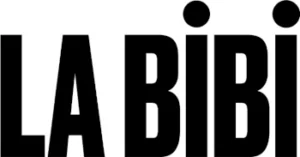Moving away from the conception of the work of art as something static and finished, the result of a process that has already concluded at the moment of exhibition, Mario Klingemann and the duo Grönlund-Nisunen have developed a work characterized by process and latency. The pieces that make up the exhibition at La Bibi undergo transformations and pauses, slow processes that invite patient contemplation. Whether through the baroque variegation of the compositions created by Klingemann with artificial intelligence programs or the rigorous rationality of the installations and sculptural pieces by Tommi Grönlund and Petteri Nisunen, Latent Spaces suggests that the work of art is not a conclusion, but rather a prompt.
Grönlund-Nisunen: Space is the position relation of bodies
The definition of space suggested by the Hungarian artist László Moholy-Nagy in The New Vision (1927) perfectly applies to the immersive installations created by the Finnish architects and visual artists Tommi Grönlund and Petteri Nisunen, whose work is also characterized by the deeply bauhausian principle that form follows function. Grönlund-Nisunen create dialogues between their artworks and the surrounding space, playing with the position relation of viewers, walls, ceilings, corridors, and windows; streets and buildings; the natural environment, and even celestial bodies. As light and sound are projected across the room, the white cube ceases to be an inert, pretendly invisible container and becomes an activated space. This is not, however, a spectacle. The artworks do not intend to cause a dramatic impact, although they have an undeniably commanding presence. They are clean, minimalistic, and bare. In a sense, “boring,” as Tommi Grönlund puts it. They carry out their processes and define, transform, or experiment with the surrounding space. One must then find one’s position in relation to that space.
Mario Klingemann: Latent space is the position relation of information
Moholy-Nagy’s text is referenced by Mario Klingemann in an article he wrote for A*Desk magazine about creativity and AI. The German visual artist, graphic designer and self-taught programmer borrows Moholy-Nagy’s reflections about architecture to describe the term “latent space,” commonly used in machine learning processes. Latent spaces are not physical spaces, but rather a way to describe how an artificial intelligence system processes the information it takes from a data set and creates clusters of items that resemble each other, according to multiple variables. Klingemann explores latent spaces as realms of endless possibilities, looking for the unexpected, the rare and weird, that which pushes his creativity further. For him, AI is not a technology that replaces the artist, but one that provides creators with new ways to develop their talent. In his work, we find endless processes fueled by artificial neural networks that generate uncanny images and responses. Faced with this creative otherness, one must find one’s position as a viewer whose aesthetic and narrative expectations are challenged.
Control and randomness
It can be said that the tension between control and randomness is always present in an artwork, even in a painting or a sculpture. How much is due to the artist’s expert hand, and how much to the reaction of the material, an accidental brushstroke, or an unlikely source of inspiration?
For Grönlund and Nisunen, the precision of the shapes they create and the elements they choose to work with does not deny fortuity: “We create some kind of framework or boundaries for the works to function within, but within these, the works take on a life of their own,” states Petteri Nisunen, “Randomness as a phenomenon has always interested me.” In Arranged Randomness, a hidden grid is created on the wall to allow thousands of magnetic spheres to be arranged in countless ways. The challenge, as the artists confess, is in fact to avoid unconsciously creating visual patterns that give an impression of order.
For Mario Klingemann, it is similarly about driving the system into the unpredictable: “[the popularization of] one-click AI art tools… forces me to look for areas out there that I still consider “wilderness” and to learn more about what it is that we humans find truly interesting and captivating.” The Hyperdimensional Attractions series addresses the unexpected by applying a three-body problem to a latent space, resulting in a triptych showing images that change according to how the feature vectors they represent “orbit” around each other.
Appropriation
Since the collages and assemblages of the early 20th century, artists have recurrently appropriated elements from the real world and incorporated them into works of art. It is now common to see that found objects or found images are part of a contemporary art installation, video, or print.
Grönlund and Nisunen “appropriate” everyday objects and machinery in their installations as a form of honesty that not only puts the focus on the process, but also stresses the beauty of the elements in themselves: “Things do not need references to the outside,” states Tommi Grönlund, “but are interesting enough in themselves in terms of their own internal logic.” This can be seen in works such as Linkage and Blind Zone, which clearly show the elements they are made of. “There’s nothing in the world that’s as amazing as a roller blind and the fact that it’s moving in front of you in that moment,” he adds, “The work is not an illustration of something, it is concrete and real.”
Mario Klingemann carries out another form of appropriation by using datasets of thousands of images or, more particularly, taking Hyeronimus Bosch’s The Garden of Earthly Delights (1490-1500) as the base material for The Garden of Ephemeral Details. In this artwork, an autonomous AI machine made of several generative adversarial networks (GANs) constantly reinterprets the famous triptych by adding new forms to its unsettlingly surreal iconography. Klingemann uses Bosch’s masterpiece as a field of algorithmic interpretation, forcing the machine to explore the “wilderness” of artistic creation by providing a peculiar data set in the form of the Dutch artist’s singular combination of religious imagery and unbridled fantasy. The resulting artwork thus becomes an experiment in machine hallucination and artificial imagination.
Motion and process
Moholy-Nagy was one of the pioneering artists exploring kinetic sculpture and the use of light and industrial materials in assemblages and installations. His work surely inspired Grönlund and Nisunen, who state that their work belongs to the context of kinetic art and consider motion a fundamental aspect of it. More specifically, they stress the fact that the artwork is performing this motion in the real space, in real time. This creates a unique relationship between the viewer and the artwork that requires both presence and attentiveness. Frozen Sphere is a work that is subject to a process that subtly changes its external surface: a stainless steel sphere filled with gel is frozen and then placed on a pedestal at room temperature, where it slowly defrosts. The sculpture is therefore a means to patiently witness a natural phenomenon, inviting the kind of observation that inspires the artists’ work.
Kinetic art also influenced early algorithmic art, with pioneers such as Manfred Mohr seeking to portray motion in abstract generative artworks and finding in personal computers a tool to create visual compositions in perpetual transformation. Mario Klingemann follows this tradition by using generative adversarial networks to create images that are not static but constantly and seamlessly morph into new shapes, accentuating the fact that the process takes precedence over the finished product. The Hyperdimensional Attractions series and The Garden of Ephemeral Details clearly show this particular decision. The former explore the position relations of feature vectors in the latent space, the resulting images becoming a way to visualize these relations. The latter deconstructs Bosch’s triptych in order to portray the effort of the machine as it tries to stretch its imagination.
Motion and process
Moholy-Nagy was one of the pioneering artists exploring kinetic sculpture and the use of light and industrial materials in assemblages and installations. His work surely inspired Grönlund and Nisunen, who state that their work belongs to the context of kinetic art and consider motion a fundamental aspect of it. More specifically, they stress the fact that the artwork is performing this motion in the real space, in real time. This creates a unique relationship between the viewer and the artwork that requires both presence and attentiveness. Frozen Sphere is a work that is subject to a process that subtly changes its external surface: a stainless steel sphere filled with gel is frozen and then placed on a pedestal at room temperature, where it slowly defrosts. The sculpture is therefore a means to patiently witness a natural phenomenon, inviting the kind of observation that inspires the artists’ work.
Kinetic art also influenced early algorithmic art, with pioneers such as Manfred Mohr seeking to portray motion in abstract generative artworks and finding in personal computers a tool to create visual compositions in perpetual transformation. Mario Klingemann follows this tradition by using generative adversarial networks to create images that are not static but constantly and seamlessly morph into new shapes, accentuating the fact that the process takes precedence over the finished product. The Hyperdimensional Attractions series and The Garden of Ephemeral Details clearly show this particular decision. The former explore the position relations of feature vectors in the latent space, the resulting images becoming a way to visualize these relations. The latter deconstructs Bosch’s triptych in order to portray the effort of the machine as it tries to stretch its imagination.







